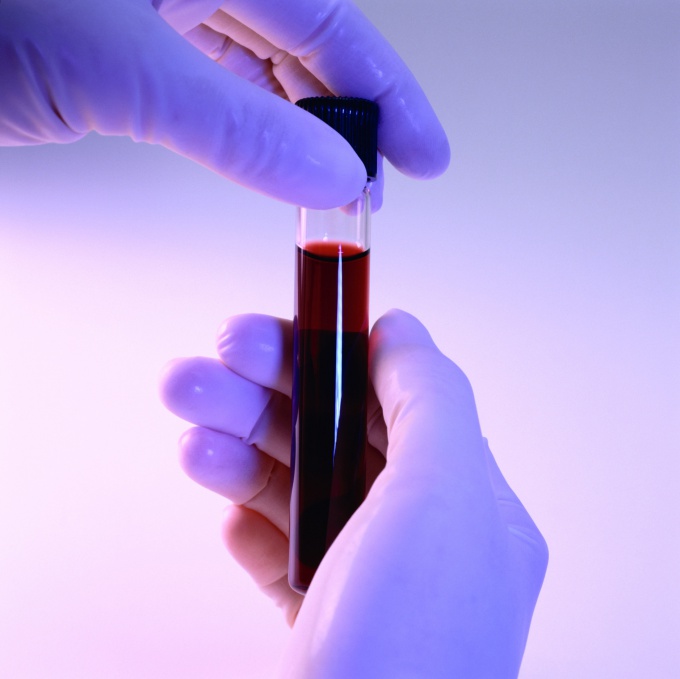Instruction
1
If the results of the hormonal analysis, the rate of TSH is exceeded, this may indicate the following disease:
- hypothyroidism
- insufficiency of adrenal function
- severe mental illness
various tumor (a tumor of the pituitary gland and others)
- hypothyroidism
- insufficiency of adrenal function
- severe mental illness
various tumor (a tumor of the pituitary gland and others)
2
During pregnancy, high rate of TTG is normal. In addition, elevated TSH levels may occur because of taking some medicines, (x-ray contrast media, anticonvulsants, etc.) and exercise.
3
Low TSH may indicate this diagnosis as:
- injury on the pituitary
- hyperthyroidism
- decrease in pituitary function
Besides this blood test for TSH may show a decline in its level as a result of therapy with preparations of thyroid hormones, psychological stress or starvation.
- injury on the pituitary
- hyperthyroidism
- decrease in pituitary function
Besides this blood test for TSH may show a decline in its level as a result of therapy with preparations of thyroid hormones, psychological stress or starvation.
4
There are many reasons for the increase or decrease of the pituitary hormone TSH. However, accurate assessment of your body, based on the results of the analysis can only provide a professional endocrinologist.
Note
For thyrotropin pretty typical diurnal variations of the secretion. The maximum concentration of TSH in the blood observed in the night in 2-4 hours, a little falls to 6-8 o'clock in the morning, the minimum number of TSH falls in the evening 17-19 hours.
Useful advice
The norm for male indicators:
0-6 months – in the range of 0.47 to 4.5
7 months - 3 years – in the range of 0.47 and 2.1
4-6 years – in the range of 0.84-4.2 V
7-8 years – in the range of 0.89-3,5
9-10 years – in the range of 0.88-6,2
11 years – in the range of 0.58 to 3.7
12 years – in the range of 1.0 to 4.6
13 years – in the range of 0.97 to 3.7
14 years – in the range of 1.15 to 3.8
15 years – in the range of 0.67 to 2.6
16 years – in the range of 0.81 to 3.4
17 years – in the interval 0,95-3,0
18-19 years – in the range of 0.92 to 3.1
20-90 years – in the range of 0.35 to 4.5
The norm for female figures:
0-6 months – in the range of 0.61 to 4.5
7 months - 3 years – in the interval of 0.61 and 2.2
4-6 years – in the range of 0.72 to 3.0
7-8 years – in the range of 0.54-6,0
9-10 years – in the range of 1.24 to 5.6
11 years – in the range of 0.39 and 2.9
12 years – in the range of 1.06-4,2
13 years – in the range of 1.01 to 4.8
14 years – in the range of 0.77-4,3
15 years – in the range of 0.52 and 2.9
16 years – in the range of 0.46 to 3.7
17 years – in the range of 0.55 to 3.6
18-19 years – in the range of 0.95 to 4.6
20-90 years – in the range of 0.35 to 4.5
The norm during pregnancy from 1 to 40 weeks – in the range of 0.2 to 3.5
0-6 months – in the range of 0.47 to 4.5
7 months - 3 years – in the range of 0.47 and 2.1
4-6 years – in the range of 0.84-4.2 V
7-8 years – in the range of 0.89-3,5
9-10 years – in the range of 0.88-6,2
11 years – in the range of 0.58 to 3.7
12 years – in the range of 1.0 to 4.6
13 years – in the range of 0.97 to 3.7
14 years – in the range of 1.15 to 3.8
15 years – in the range of 0.67 to 2.6
16 years – in the range of 0.81 to 3.4
17 years – in the interval 0,95-3,0
18-19 years – in the range of 0.92 to 3.1
20-90 years – in the range of 0.35 to 4.5
The norm for female figures:
0-6 months – in the range of 0.61 to 4.5
7 months - 3 years – in the interval of 0.61 and 2.2
4-6 years – in the range of 0.72 to 3.0
7-8 years – in the range of 0.54-6,0
9-10 years – in the range of 1.24 to 5.6
11 years – in the range of 0.39 and 2.9
12 years – in the range of 1.06-4,2
13 years – in the range of 1.01 to 4.8
14 years – in the range of 0.77-4,3
15 years – in the range of 0.52 and 2.9
16 years – in the range of 0.46 to 3.7
17 years – in the range of 0.55 to 3.6
18-19 years – in the range of 0.95 to 4.6
20-90 years – in the range of 0.35 to 4.5
The norm during pregnancy from 1 to 40 weeks – in the range of 0.2 to 3.5










